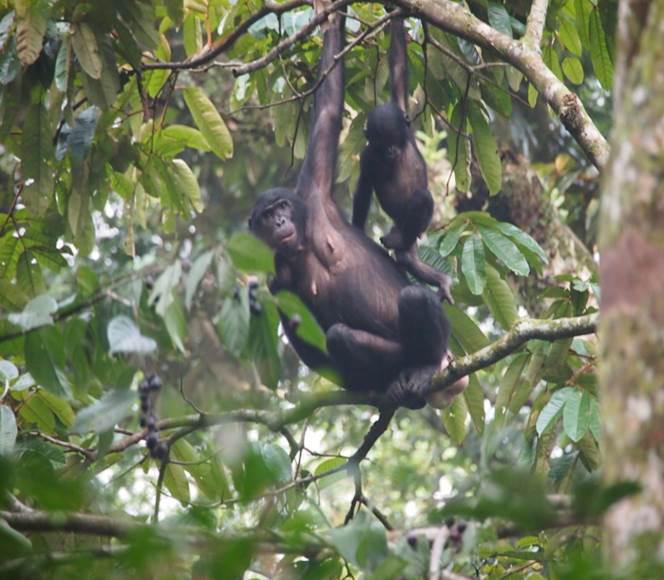Balemba Emmanuel Balagizi
Other projects
21 Feb 2018
Community Awareness Improvement and Habitat Restoration of Lyondji Community Bonobo Reserve
Our project aims to:
-stabilize the habitat through enhance law enforcement;
-estimate density of bonobos by nests counting in the South East of Iyondji reserve. Counting nets will allow us to update the density of bonobos data of three bonobo groups (Iteketa, Bohondohondo and Bembongo) in the South. The data will serve as guidance to relaunch habituation programme, stopped mid-2016, as the escape behavior is becoming bigger and bigger;
-improve local communities’ conservation skills to drastically reduce the slush and burn through education, capacity building and training.

The Iteketa Group.
The Iyondji ecosystem integrity and landscape connectivity are threatened by deforestation resulting from slash and burn agriculture, unsustainable forest utilization and a high demand for bush-meat for food and trade after torrential rains devastated residents farms. For Iyondji residents, fauna has always been the only source of natural protein. The practice of hunting used to be regulated by a series of prohibitions followed by a very hierarchical organization and at the same time complex. Exploitation and utilization were carried out according to traditional rules and customs. This is why a large number of villages were also created by hunters, some animal species such as bonobos (bilya in vernacular language) are almost venerated and are either prohibited for hunting and consumption. This taboo persists in older generations has helped in the conservation of this endangered species but young people have begun to eat bonobo meat because of cultural interchanges with other ethnics groups.
Bonobos, (Pan paniscus) "dwarf chimpanzees" only found in the DRCongo have less and less space to live and the main causes are the expansion of human habitats and poaching. Information collected from the anti-poaching team indicates cases of juvenile bonobos with fingers or arms amputated by various traps or snares.
We expect from this project to -stabilize the habitat through enhance law enforcement; -estimate density of bonobos by nests counting in the South East of Iyondji reserve. Counting nets will allow us to update the density of bonobos data of three bonobo groups (Iteketa, Bohondohondo and Bembongo) in the South. The data will serve as guidance to relaunch habituation programme, stopped mid-2016; -improve local communities’ conservation skills to drastically reduce the slush and burn through education, capacity building and training. For Iyondji sustainable conservation, local communities need to be equipped with tools in maintaining or strengthening their conservation-friendly practices (taboo eating bonobo), changing their conservation-unfriendly practices or internal threats (water poisoning for fish), and collaboratively addressing external threats to biodiversity.
It says "you protect bilya you save the forest".